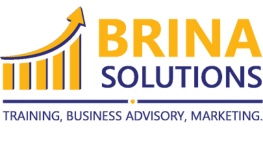
Investing in corporate training is vital for building a skilled workforce, but demonstrating its return on investment (ROI) is equally crucial. Measuring ROI ensures that training programs deliver value, align with organizational goals, and justify future investments. Here’s a comprehensive guide to calculating and optimizing the ROI of corporate training initiatives.
1. Define Clear Objectives for Training
Start by identifying what you aim to achieve with the training. Clear objectives provide a framework for measuring success.
Common Objectives:
- Improve employee performance.
- Enhance customer satisfaction.
- Reduce operational errors or costs.
- Increase productivity or sales.
Example: A sales training program aims to boost team performance by 20% within six months.
2. Calculate Training Costs
To measure ROI accurately, identify all associated training costs.
Types of Costs to Consider:
- Direct Costs: Trainer fees, materials, software subscriptions, venue rentals.
- Indirect Costs: Lost employee productivity during training sessions.
- Implementation Costs: Follow-up resources, post-training evaluations, and tools.
Pro Tip: Use tools like spreadsheets or training software to track and categorize expenses.
3. Identify Key Performance Indicators (KPIs)
KPIs are metrics that help assess whether training objectives are met. Choose indicators that directly relate to the training goals.
Examples of KPIs:
- Employee Productivity: Measure output before and after training.
- Customer Satisfaction: Track changes in customer feedback scores.
- Sales Metrics: Compare pre- and post-training sales performance.
- Employee Retention: Evaluate if training impacts staff turnover rates.
4. Assess Learning and Behavior Changes
Use the Kirkpatrick Model to evaluate training outcomes:
- Reaction: Collect feedback to understand participants’ satisfaction.
- Learning: Test knowledge gained through pre- and post-training assessments.
- Behavior: Observe changes in workplace behavior and application of skills.
- Results: Track improvements in business performance.
Example: After customer service training, track complaint resolution times to measure behavior change.
5. Quantify Business Impact
Determine how the training directly contributes to business performance.
Methods:
- Compare sales revenue or productivity metrics before and after training.
- Track cost savings from fewer errors or operational inefficiencies.
- Assess the impact of improved customer satisfaction on retention and revenue.
Example: If a leadership training program leads to faster decision-making, quantify time savings and productivity improvements.
6. Use the ROI Formula
The formula for calculating ROI is:
ROI (%) = [(Monetary Benefits – Training Costs) / Training Costs] × 100
7. Gather Feedback and Insights
Feedback from participants and managers provides valuable qualitative data to complement quantitative metrics.
Questions to Ask:
- Did the training meet your expectations?
- Are you applying the skills learned in your role?
- What could be improved in future training sessions?
Pro Tip: Use surveys or focus groups to gather detailed insights.
8. Monitor Long-Term Impact
Measuring ROI isn’t a one-time activity. Regularly review training outcomes over time to ensure sustained benefits.
Key Practices:
- Conduct quarterly reviews of performance metrics.
- Adjust training programs based on evolving business needs.
- Compare the ROI of different training initiatives to identify the most effective ones.
Example: Track the retention rate of employees who underwent leadership training over two years compared to those who did not.
Conclusion: Maximize ROI with Strategic Training
Corporate training is a powerful tool for driving business success, but its effectiveness hinges on the ability to measure and optimize ROI. By setting clear objectives, tracking relevant metrics, and quantifying business impact, organizations can ensure their training initiatives deliver value and support long-term growth.
Want to maximize ROI from your corporate training programs? Brina Solutions specializes in designing and measuring impactful training initiatives tailored to your business needs. Contact us today to transform your workforce!







Leave a Reply